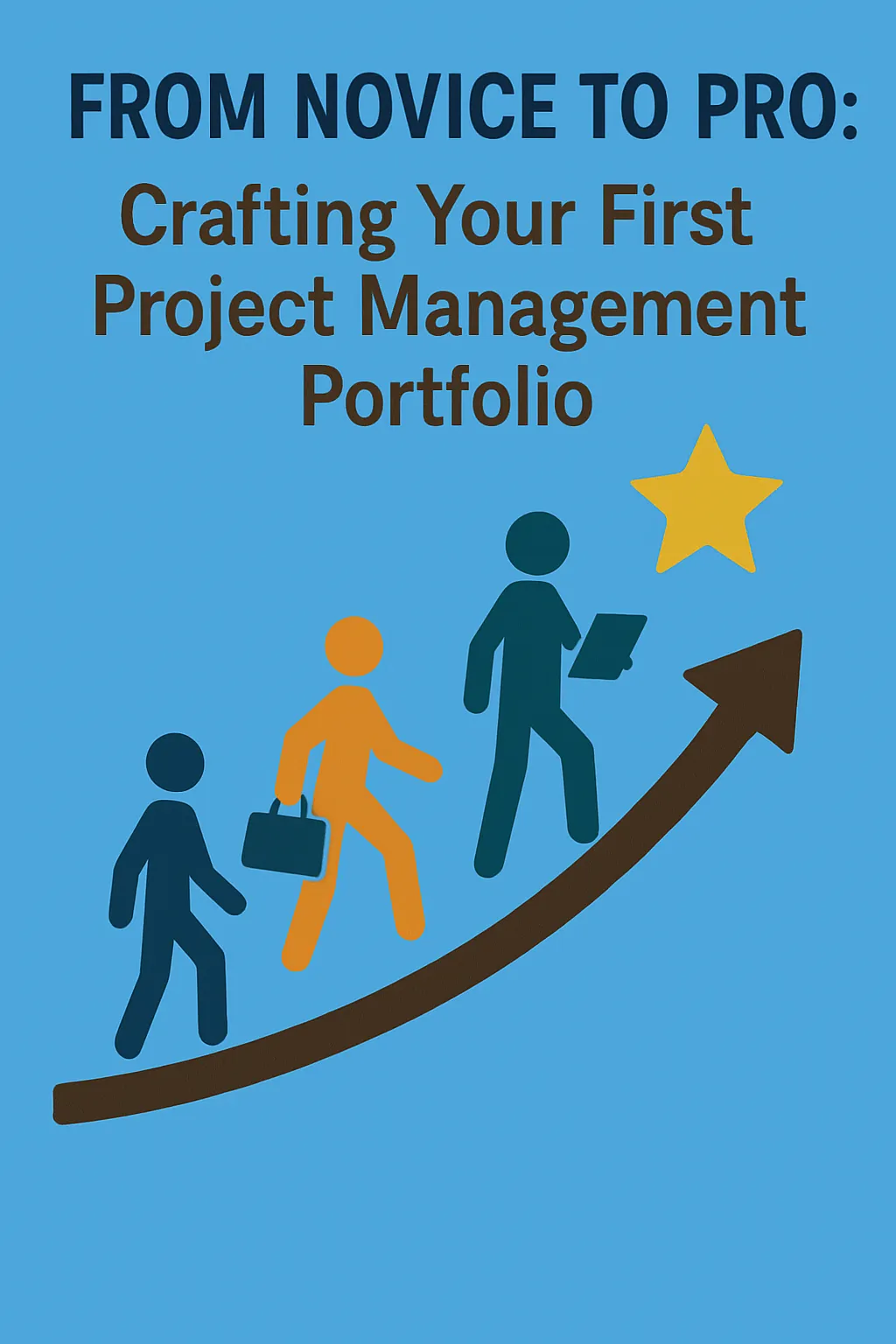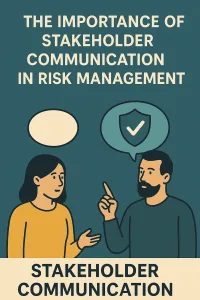Introduction
A well-crafted portfolio serves as a vital tool for both new project managers and students embarking on their professional journeys. A project management portfolio is essentially a curated collection of work samples, achievements, and documentation that showcases an individual’s skills, experience, and competencies in managing projects effectively. It acts as a personal marketing tool, allowing you to present your capabilities to potential employers and stakeholders, thereby enhancing your professional credibility.
Benefits of Having a Portfolio for New Project Managers
For beginners in project management, developing a portfolio offers several key advantages:
- Demonstrates Skills and Experience: A portfolio provides tangible evidence of your project management skills, showcasing your ability to lead projects, manage teams, and deliver results. This is particularly important for those who may not have extensive work experience yet [2][10].
- Enhances Employability: In a competitive job market, having a well-organized portfolio can set you apart from other candidates. It highlights your proactive approach to professional development and your commitment to the field of project management [10][11].
- Facilitates Self-Reflection: As you compile your portfolio, you will reflect on your experiences, strengths, and areas for improvement. This process not only helps you understand your capabilities better but also aids in identifying your career goals [3][12].
- Aligns with Industry Standards: A project management portfolio can help you align your skills with industry expectations. By including key components such as case studies and project summaries, you demonstrate your understanding of project management methodologies and best practices [6][12].
Overview of Steps to be Covered in the Guide
This guide will provide a step-by-step approach to crafting your first project management portfolio, tailored specifically for beginners. The following steps will be covered:
- Identifying Key Components: Learn about the essential elements to include in your portfolio, such as case studies, project summaries, and evidence of your project management methodologies [6][12].
- Compiling Work Samples: Discover how to gather and present your work samples effectively, ensuring they highlight your strengths and contributions to various projects [2][10].
- Showcasing Your Skills: Understand how to articulate your skills in leadership, problem-solving, and communication, which are universally respected in project management [3][10].
- Organizing Your Portfolio: Get tips on how to structure your portfolio for clarity and impact, making it easy for potential employers to navigate and assess your qualifications [6][12].
- Continuous Improvement: Learn the importance of regularly updating your portfolio to reflect new experiences and skills as you progress in your project management career [11][15].
By following this guide, you will be well-equipped to create a compelling project management portfolio that not only showcases your abilities but also positions you as a promising candidate in the field.
Understanding the Basics of a PM Portfolio
Creating a project management (PM) portfolio is an essential step for new project managers and students looking to establish their professional identity. A well-crafted portfolio not only showcases your skills and experiences but also serves as a powerful tool in your job search. Here’s a step-by-step guide to understanding the basics of a PM portfolio.
Different Types of Project Management Portfolios
- Digital Portfolios: These are increasingly popular due to their accessibility and ease of sharing. Digital portfolios can be hosted on personal websites, LinkedIn profiles, or specialized portfolio platforms. They allow for multimedia elements such as videos, presentations, and interactive content, making them engaging for potential employers.
- Physical Portfolios: While less common in the digital age, physical portfolios can still be effective, especially in face-to-face interviews. They typically include printed documents, project summaries, and visual aids that can be presented during discussions. This tangible format can leave a lasting impression.
- Hybrid Portfolios: Combining both digital and physical elements, hybrid portfolios offer flexibility. For instance, you might have a digital version for online applications and a physical version for in-person interviews, allowing you to adapt to different situations.
Key Components of a Portfolio
A comprehensive PM portfolio should include several key components that highlight your capabilities:
- Project Descriptions: Each project should have a clear description that outlines the project’s objectives, your role, and the context in which it was executed. This helps potential employers understand the scope of your experience.
- Outcomes: Highlight the results of your projects, including metrics such as time saved, budget adherence, or stakeholder satisfaction. Quantifying your achievements can significantly enhance your portfolio’s impact.
- Skills: Include a section that lists relevant skills acquired through your projects, such as leadership, communication, risk management, and problem-solving. This not only showcases your competencies but also aligns with the skills employers are seeking.
- Tools Used: Mention any project management tools or software you utilized, such as Microsoft Project, Trello, or Asana. Familiarity with these tools can be a deciding factor for employers looking for candidates who can hit the ground running.
The Role of a Portfolio in Showcasing Experience and Skills
A well-structured PM portfolio serves multiple purposes:
- Demonstrating Experience: It provides concrete evidence of your project management experience, allowing you to present your journey from novice to pro. This is particularly important for new project managers who may lack extensive work history.
- Showcasing Skills: Your portfolio acts as a platform to highlight your skills in a practical context. By detailing your contributions to various projects, you can effectively communicate your value to potential employers.
- Enhancing Job Applications: Including a portfolio with your job applications can set you apart from other candidates. It provides a visual and narrative representation of your capabilities, making your application more memorable.
Step 1: Gather Your Experiences
Creating a project management portfolio is an essential step for new project managers and students looking to showcase their skills and experiences. This section will guide you through the process of gathering relevant experiences that will form the foundation of your portfolio.
Identify Relevant Experiences
- Personal Projects: Start by listing any personal projects you have undertaken. These could include organizing events, managing a community service initiative, or even planning a family gathering. Each of these experiences can highlight your ability to plan, execute, and manage resources effectively.
- Internships: If you have completed internships, reflect on the projects you were involved in. Identify specific tasks where you played a role in project management, such as coordinating team efforts, managing timelines, or communicating with stakeholders.
- Coursework: Many project management courses include practical assignments or group projects. Document these experiences, focusing on your contributions and the skills you utilized. Highlight any leadership roles or responsibilities you took on during these projects.
Tips for Documenting Experiences
- Clarity and Conciseness: When documenting your experiences, aim for clarity. Use bullet points to outline your roles and responsibilities, and keep descriptions concise. This will make it easier for potential employers or clients to quickly grasp your capabilities.
- Use Action Verbs: Start each bullet point with strong action verbs (e.g., “coordinated,” “led,” “developed”) to convey your active involvement in each project. This approach not only makes your portfolio more engaging but also emphasizes your contributions.
Reflect on Lessons Learned
- Outcomes Achieved: For each project, take a moment to reflect on the outcomes. What were the results of your efforts? Did you meet the project goals? Highlighting successful outcomes can demonstrate your effectiveness as a project manager.
- Lessons Learned: Consider what you learned from each experience. Did you encounter challenges, and how did you overcome them? Reflecting on these lessons not only shows your growth but also your ability to adapt and improve in future projects.
By gathering and documenting your experiences thoughtfully, you will create a strong foundation for your project management portfolio. This step is crucial in showcasing your journey from novice to pro, as it highlights your practical skills and readiness to take on new challenges in the field of project management.
Step 2: Choose Your Format
When crafting your first project management portfolio, selecting the right format is crucial as it influences how your work is perceived by potential employers or clients. Here’s a step-by-step guide to help you navigate this decision.
1. Digital Portfolios vs. Physical Portfolios
Digital Portfolios:
- Websites: Creating a personal website can be an effective way to showcase your portfolio. It allows for dynamic content, easy updates, and can include multimedia elements such as videos and interactive charts. Websites can also be optimized for search engines, increasing your visibility to potential employers.
- PDFs: A well-designed PDF portfolio is another popular option. It is easily shareable via email and can be printed if necessary. PDFs can maintain a professional appearance and are often easier to format for specific job applications.
Physical Portfolios:
- While less common in the digital age, physical portfolios can still be effective, especially in face-to-face interviews. They allow you to present tangible evidence of your work, such as printed project plans, reports, and other documentation. However, they can be cumbersome to transport and may not be as easily updated as digital formats.
2. Considerations for Choosing the Right Format
- Audience: Understanding your target audience is key. If you are applying for a tech-savvy organization, a digital portfolio may be more appealing. Conversely, if you are interviewing with a traditional company, a physical portfolio might resonate better.
- Accessibility: Consider how easily your audience can access your portfolio. Digital formats can be accessed from anywhere, while physical portfolios require in-person meetings. Ensure that your chosen format aligns with the preferences of your potential employers or clients.
3. Examples of Effective Portfolio Designs and Layouts
- Clean and Professional Design: Regardless of the format, your portfolio should have a clean, professional look. Use consistent fonts, colors, and layouts to create a cohesive appearance.
- Project Highlights: Include sections that highlight key projects, showcasing your role, the challenges faced, and the outcomes achieved. Use visuals like charts or graphs to illustrate your impact.
- Testimonials and Endorsements: Incorporate quotes or endorsements from colleagues or supervisors to add credibility to your portfolio. This can be particularly effective in both digital and physical formats.
- Interactive Elements: For digital portfolios, consider adding interactive elements such as clickable project links, videos, or infographics that can engage your audience more effectively.
By carefully considering the format of your project management portfolio, you can create a compelling presentation of your skills and experiences that resonates with your target audience. Whether you choose a digital or physical format, ensure that it reflects your professionalism and showcases your journey from novice to pro in project management.
Step 3: Crafting Project Descriptions
Crafting effective project descriptions is a crucial step in developing a project management portfolio, especially for beginners. A well-structured project description not only showcases your skills and experiences but also communicates your understanding of project management principles. Here’s a step-by-step guide to help you write compelling project descriptions.
Structure for Project Descriptions
- Title: Start with a concise and attention-grabbing title that encapsulates the essence of your project. This should reflect the main focus or outcome of the project, making it easy for readers to grasp its significance at a glance.
- Objective: Clearly state the purpose of the project. What were you aiming to achieve? This section should provide a brief overview of the project’s goals and its relevance to the field of project management.
- Methodology: Describe the approach you took to execute the project. This includes the strategies, tools, and techniques you employed. Highlighting your methodology demonstrates your ability to plan and implement projects effectively.
- Outcomes: Summarize the results of your project. What were the key deliverables? Did you meet your objectives? Providing measurable outcomes can significantly enhance the impact of your description, showcasing your success and effectiveness as a project manager.
- Lessons Learned: Reflect on what you learned throughout the project. This could include challenges faced, solutions implemented, and insights gained. Sharing lessons learned not only shows your ability to adapt and grow but also highlights your critical thinking skills.
Importance of Clarity, Conciseness, and Impact
When writing project descriptions, clarity and conciseness are paramount. Aim to communicate your points in a straightforward manner, avoiding jargon that may confuse readers. Each description should be impactful, leaving a lasting impression on potential employers or stakeholders. A well-articulated project description can set you apart from other candidates by clearly demonstrating your capabilities and achievements in project management [1][5].
Tips for Tailoring Project Descriptions
To make your project descriptions more relevant to potential employers, consider the following tips:
- Align with Job Descriptions: Review job postings in your field and identify the skills and experiences that employers are seeking. Tailor your project descriptions to highlight these aspects, ensuring that your portfolio resonates with the expectations of hiring managers.
- Use Keywords: Incorporate industry-specific keywords and phrases that are commonly found in job descriptions. This not only helps in making your portfolio more searchable but also demonstrates your familiarity with the terminology used in project management.
- Showcase Relevant Skills: Emphasize skills that are particularly relevant to the projects you describe. For instance, if a job requires strong leadership skills, highlight instances where you successfully led a team or managed stakeholder relationships.
By following these guidelines, you can craft project descriptions that not only reflect your experiences but also align with the expectations of the job market, ultimately enhancing your project management portfolio and increasing your chances of success in your career [2][3][4][6].
Step 4: Highlighting Skills and Tools
In the journey from novice to pro in project management, showcasing your skills and tools is a crucial step in crafting an effective portfolio. This section will guide you on how to effectively highlight your project management competencies, ensuring that potential employers or clients can easily recognize your capabilities.
Key Project Management Skills
When building your portfolio, it is essential to list key project management skills that are universally respected in the field. Here are some vital skills to consider:
- Communication: The ability to convey information clearly and effectively is paramount. This includes both verbal and written communication, as well as active listening skills.
- Leadership: Demonstrating your ability to lead teams, inspire others, and drive projects to completion is critical. Highlight experiences where you took charge and guided a team towards achieving project goals.
- Risk Management: Show your understanding of identifying, analyzing, and mitigating risks throughout the project lifecycle. This skill is essential for ensuring project success and minimizing potential setbacks.
- Problem-Solving: Employers value project managers who can think critically and creatively to overcome challenges. Provide examples of how you have navigated obstacles in past projects.
- Time Management: The ability to prioritize tasks and manage time effectively is crucial in meeting deadlines and ensuring project milestones are achieved.
Integrating Tools and Methodologies
In addition to skills, it is important to integrate specific tools and methodologies that you have used in your projects. This not only demonstrates your technical proficiency but also shows your adaptability to different project environments. Consider including:
- Methodologies: Mention any project management methodologies you are familiar with, such as Agile, Waterfall, or Scrum. Explain how you have applied these methodologies in your projects to enhance efficiency and collaboration.
- Software Tools: List the project management software tools you have experience with, such as Microsoft Project, Trello, Asana, or JIRA. Highlight how these tools have helped you in planning, tracking progress, and managing resources effectively.
Tips for Demonstrating Proficiency
To effectively demonstrate your proficiency in the skills and tools mentioned, consider the following tips:
- Provide Examples: Use specific examples from your projects to illustrate how you applied your skills and tools. For instance, describe a situation where your communication skills helped resolve a conflict within the team or how you utilized a particular software tool to streamline project tasks.
- Quantify Achievements: Whenever possible, quantify your achievements to provide concrete evidence of your capabilities. For example, mention how you successfully led a project that was completed 20% under budget or how you improved team productivity by implementing a new project management tool.
- Include Testimonials: If you have received positive feedback from colleagues or supervisors, consider including testimonials in your portfolio. This adds credibility to your claims and showcases your impact on past projects.
By effectively highlighting your skills and tools, you will create a compelling project management portfolio that not only reflects your capabilities but also positions you as a strong candidate in the competitive job market.
Step 5: Adding Testimonials and References
In the journey from novice to pro in project management, crafting a compelling portfolio is essential. One of the most impactful ways to enhance your portfolio’s credibility is by including testimonials and references. This section will guide you through the process of effectively incorporating these elements into your project management portfolio.
How to Request Testimonials
- Identify the Right People: Reach out to peers, mentors, or supervisors who are familiar with your work. Choose individuals who can speak positively about your skills and contributions.
- Timing is Key: The best time to ask for a testimonial is immediately after a successful project or task completion. This ensures that the experience is fresh in their minds, allowing for more genuine and specific feedback [12].
- Be Specific in Your Request: When asking for a testimonial, provide context about what you would like them to focus on. This could include your project management skills, teamwork, or problem-solving abilities. Specificity helps them craft a more meaningful response [6].
- Use Thoughtful Questions: Consider asking open-ended questions that encourage detailed responses. For example, “What was your experience working with me on this project?” or “How did my contributions impact the project’s success?” [12].
Best Practices for Including References
- Select Relevant References: Choose 3-5 individuals who can vouch for your skills and experiences relevant to project management. This could include former supervisors, colleagues, or clients [4].
- Group by Theme or Skill: Organize your references by themes or skills they can speak to. This makes it easier for potential employers to find relevant endorsements that align with the job requirements [10].
- Keep It Updated: Regularly update your references to reflect your most recent experiences and achievements. Outdated references can make your portfolio seem stagnant and less credible [14].
- Format for Clarity: Present your references in a clear and professional format. Include the person’s name, title, relationship to you, and a brief description of what they can speak about. This structured approach enhances readability and professionalism [1].
The Value of Third-Party Validation
Including testimonials and references in your portfolio serves as a powerful form of third-party validation. Here’s why it matters:
- Builds Trust: Testimonials from credible sources can significantly enhance your trustworthiness in the eyes of potential employers. They provide evidence of your capabilities and work ethic, which can be more persuasive than self-promotion [8].
- Showcases Real Experiences: Testimonials highlight genuine experiences and outcomes, showcasing the impact of your work. This narrative can resonate more with employers than a list of skills or qualifications alone [6].
- Differentiates You from Others: In a competitive job market, having strong testimonials can set you apart from other candidates. They provide a unique perspective on your abilities and contributions, making your portfolio more memorable [8].
Incorporating testimonials and references into your project management portfolio is not just about filling space; it’s about building a narrative of credibility and trust. By following these steps, you can create a portfolio that not only showcases your skills but also reinforces your professional reputation in the field of project management.
Step 6: Review and Refine Your Portfolio
Crafting a project management portfolio is an essential step for new project managers and students looking to showcase their skills and experiences. Once you have compiled your portfolio, the next critical phase is to review and refine it. This step ensures that your portfolio is not only polished but also effectively communicates your capabilities. Here are some key points to consider during this process:
Tips for Self-Review
- Check for Accuracy: Ensure that all the information in your portfolio is correct. This includes project details, dates, roles, and outcomes. Inaccuracies can undermine your credibility and lead to misunderstandings about your experience [6][8].
- Clarity: Your portfolio should be easy to read and understand. Use clear language and avoid jargon unless it is industry-standard. Aim for concise descriptions that highlight your contributions and the impact of your projects [4][9].
- Relevance: Tailor your portfolio to the audience you are presenting it to. Focus on projects that are most relevant to the roles you are applying for or the skills you wish to highlight. This targeted approach will make your portfolio more compelling [1][7].
Seeking Feedback
- Peer Review: Share your portfolio with fellow project management students or colleagues. They can provide valuable insights and point out areas that may need improvement. Constructive criticism from peers can help you see your work from a different perspective [3][10].
- Mentorship: If possible, seek feedback from a mentor or an experienced project manager. Their expertise can guide you in refining your portfolio and ensuring that it meets industry standards. They may also offer suggestions on how to present your projects more effectively [2][11].
Keeping Your Portfolio Updated
- Regular Updates: As you gain new experiences and complete additional projects, it is crucial to keep your portfolio current. Regularly updating your portfolio not only reflects your growth but also ensures that it remains relevant to potential employers or clients [5][12].
- Reflect on New Skills: With each new project, take the time to reflect on the skills you have developed and the lessons learned. Incorporating these reflections into your portfolio can provide depth and demonstrate your commitment to continuous improvement [14][15].
By following these steps to review and refine your project management portfolio, you will be better prepared to present your skills and experiences confidently. A well-crafted portfolio can significantly enhance your chances of success in the competitive field of project management.
Conclusion
In the journey from novice to professional in project management, a well-crafted portfolio serves as a vital tool that showcases your skills, experiences, and achievements. Here are some key points to consider regarding the importance of maintaining a project management portfolio:
- Demonstrates Competence: A project management portfolio not only highlights your capabilities but also provides tangible evidence of your work. It allows potential employers to see your strengths and the value you can bring to their organization, making it an essential asset in your career development [1][3].
- Facilitates Reflection and Growth: Building and maintaining your portfolio is not a one-time task; it is an ongoing process. As you complete new projects and gain more experience, regularly updating your portfolio will help you reflect on your growth and adapt to the evolving demands of the industry. This continuous development is crucial for staying relevant and competitive in the field [5][6].
- Encouragement for Continuous Learning: Embracing the idea of portfolio building as a lifelong endeavor encourages you to seek out new learning opportunities, whether through formal education, certifications, or hands-on project experience. This mindset will not only enhance your portfolio but also enrich your professional journey [2][8].
As you embark on this exciting path, take the first step today by starting to craft your project management portfolio. Remember, it is a reflection of your journey, and each addition to it is a testament to your commitment to continuous learning and improvement. Embrace the process, and let your portfolio be a beacon of your professional growth in project management.
Find out more about Shaun Stoltz https://www.shaunstoltz.com/about/.
This post was written by an AI and reviewed/edited by a human.



